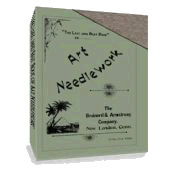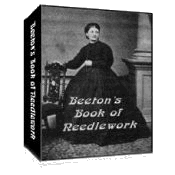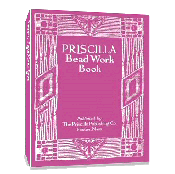Plush Stitch
In researching the Plush Stitch, I found two different methods of embroidering a stitch by this name. I have encountered this on a few embroidery stitches in the past. Sometimes two entirely different stitches have the same name and other times one stitch is stitched entirely different but the end results are similar. This is the case with this stitch.
In 1883, Victorian Ladies were given the following instructions regarding this stitch:
The Plush Stitch is used for raising portions of certain designs above the surface of material and is employed principally in working cat-tail sumac, goldenrod, coxcomb and flowers of similar nature.
A foundation is first made for this stitch by means of French knots made of Zephyr or yarn, which are worked over the portion of flower to be raised; they should be place quite close together, and yet should not be crowded. Of course in placing the knots care must be taken to follow and preserve the outline of design perfectly.
For making the plush stitch, rope silk or filo floss should be used. Cut the skeins of silk into equal lengths, according to the height you desire to raise the flower; after the silk is cut, place between each French knot two of the strands, crossed like an X, sew them firmly down to foundation and proceed to fill in each space between the knots. If the flower requires to be very thick and velvety, instead of crossing two lengths of the cut skein, double the lengths, using four instead of two pieces between each French knot. After the flower is completed whisk the silk out with a brush broom and clip of evenly. This stitch is used in raised embroidery only.
By the early 1900’s, the instructions for this stitch had changed. This is what was published about this stitch in 1912.
Plush stitch also called the Tufted Stitch is in reality the same as Picot (Thorn) stitch, being formed of a loop made by passing the working thread over a large pin, or mesh, securing it with a Cross or Buttonhole stitch. The difference is that Thorn stitch is worked on the edge of a border to break the monotony of the straight edge, while Plush stitch is so worked as to cover considerable pieces of material, to form a kind of mat.

Click on picture to see more detail.
Sometimes the loops are cut open and fringed out with a pin, so making a softer and thicker mat.
What does that mean for you, dear reader? It means that you have an opportunity to try a new stitch or two, and decide which will be most useful to you. After all, isn’t learning and trying new stitches one of the best parts about the art of embroidery?
Return to top of Plush Stitch page.
Return to Embroidery Stitches page.
Return to Home page.



 433 pages!
433 pages!

